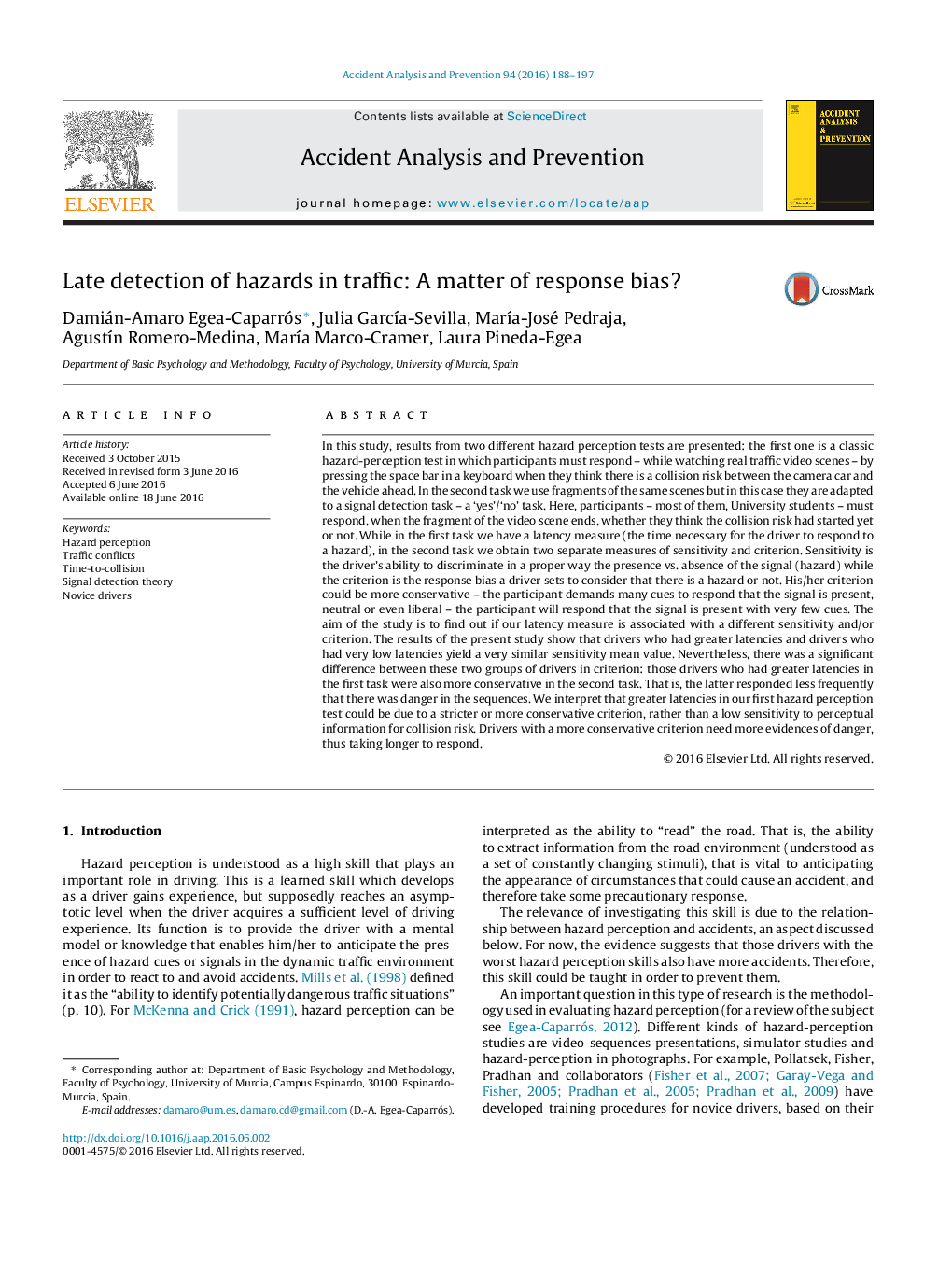| کد مقاله | کد نشریه | سال انتشار | مقاله انگلیسی | نسخه تمام متن |
|---|---|---|---|---|
| 572021 | 1452903 | 2016 | 10 صفحه PDF | دانلود رایگان |
• We measure hazard perception in traffic through two different tests.
• The first one is a classic hazard-perception test and the main measure is latency.
• The second one is adapted to Signal Detection Theory, in the version Yes/No task.
• We analyze the relationship between Latency, Sensitivity and Criterion.
• We find out that drivers with longer latencies also have a stricter Criterion.
In this study, results from two different hazard perception tests are presented: the first one is a classic hazard-perception test in which participants must respond – while watching real traffic video scenes – by pressing the space bar in a keyboard when they think there is a collision risk between the camera car and the vehicle ahead. In the second task we use fragments of the same scenes but in this case they are adapted to a signal detection task – a ‘yes’/‘no’ task. Here, participants – most of them, University students – must respond, when the fragment of the video scene ends, whether they think the collision risk had started yet or not. While in the first task we have a latency measure (the time necessary for the driver to respond to a hazard), in the second task we obtain two separate measures of sensitivity and criterion. Sensitivity is the driver’s ability to discriminate in a proper way the presence vs. absence of the signal (hazard) while the criterion is the response bias a driver sets to consider that there is a hazard or not. His/her criterion could be more conservative – the participant demands many cues to respond that the signal is present, neutral or even liberal – the participant will respond that the signal is present with very few cues. The aim of the study is to find out if our latency measure is associated with a different sensitivity and/or criterion. The results of the present study show that drivers who had greater latencies and drivers who had very low latencies yield a very similar sensitivity mean value. Nevertheless, there was a significant difference between these two groups of drivers in criterion: those drivers who had greater latencies in the first task were also more conservative in the second task. That is, the latter responded less frequently that there was danger in the sequences. We interpret that greater latencies in our first hazard perception test could be due to a stricter or more conservative criterion, rather than a low sensitivity to perceptual information for collision risk. Drivers with a more conservative criterion need more evidences of danger, thus taking longer to respond.
Journal: Accident Analysis & Prevention - Volume 94, September 2016, Pages 188–197
